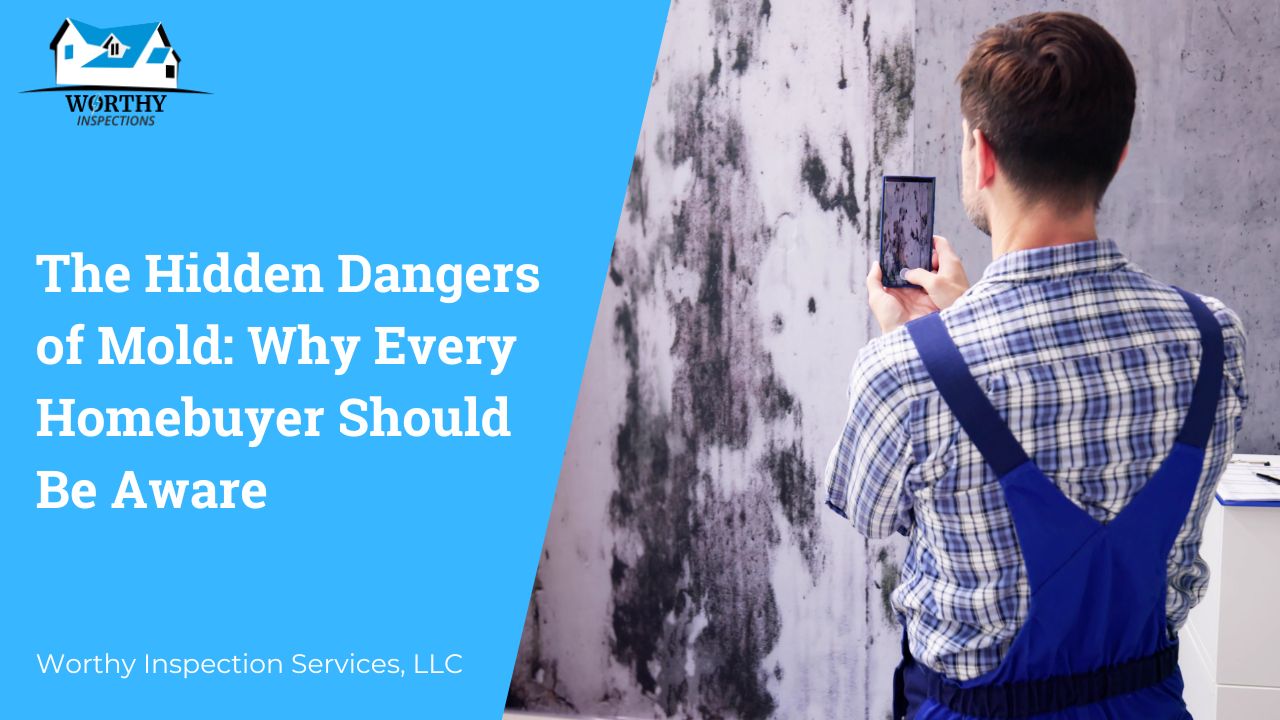A home is more than just a place to live, it's an investment in comfort, security, and future well-being. However, hidden dangers like mold can compromise a house's structural integrity and its occupants' health. Mold often lurks in unseen areas, thriving in damp conditions and causing potential damage over time. Left unchecked, mold can lead to expensive repairs, decreased property value, and serious health concerns.
Continue reading to identify mold risks, understand their implications, and make informed decisions when buying a home.
What is Mold and How Does It Affect Homes?
Mold is a type of fungus that thrives in damp, humid environments. It grows on organic materials such as wood, drywall, and carpet, especially in areas with poor ventilation or water damage.
Excessive moisture from leaks, flooding, or high humidity encourages mold growth, leading to potential structural and aesthetic damage. Over time, mold can weaken walls, ceilings, and flooring, causing costly repairs. Additionally, its presence often results in an unpleasant, musty odor and unsightly stains, diminishing the home’s appeal.
Why Mold is a Concern for Homebuyers
Mold exposure can lead to significant health concerns, especially for individuals with allergies, asthma, or weakened immune systems. Common side effects of mold in a house include:
- Persistent coughing and wheezing
- Skin irritation and rashes
- Sinus congestion and headaches
- Eye and throat irritation
- Worsening asthma symptoms
Beyond health concerns, mold significantly impacts a property's value. Homes with extensive mold damage may require thousands of dollars in repairs, making them less attractive to buyers. House mold removal and remediation costs can add up quickly, especially if the problem has been left unchecked for a long time.
How to Identify Mold in a Potential Home
Detecting mold before purchasing a home is essential. Some visible signs of mold include:
- Discolored patches on walls, ceilings, or floors
- A persistent musty smell, particularly in basements and attics
- Warped or peeling wallpaper and paint
- Mold or mildew buildup around windows, vents, or HVAC systems
However, mold isn’t always in plain sight. It can grow behind walls, under carpets, or within HVAC systems. A professional house mold inspection is crucial to identifying hidden mold issues that may not be apparent during a casual walkthrough.
Should You Buy a House with Mold?
Purchasing a home with mold is not necessarily a dealbreaker but requires careful evaluation. Consider the following factors before making a decision:
- The severity of the mold problem: A minor problem may be manageable, while widespread mold damage can be a red flag.
- Remediation costs: The cost of mold remediation depends on the extent of the damage. If the costs are too high, the home may not be worth the investment.
- Potential for hidden mold issues: If one area has mold, there could be more hidden within the home.
- Negotiation opportunities: Buyers may be able to negotiate a lower price or request that the seller handle the remediation before closing.
- Future risks: If the underlying moisture problem is not resolved, mold could return even after remediation.
What to Do If You Find Mold During the Home Inspection
Based on the findings, buyers have several options:
- Negotiate the price: Request a price reduction to offset remediation costs.
- Seller remediation: Ask the seller to remediate the mold before closing.
- Walk away: If the mold problem is too extensive, it may be best to look for another home.
- Obtain a professional opinion: Consulting with mold remediation experts can offer a more detailed understanding of the potential costs and feasibility of removal.
How to Handle Mold Remediation and Prevention
Steps in the Mold Remediation Process
- Identifying the source: Fixing leaks or addressing humidity problems.
- Containment: Preventing mold spores from spreading during removal.
- Removal and cleaning: Using professional cleaning solutions and HEPA filtration.
- Dehumidification and ventilation improvements: Ensuring long-term moisture control.
- Final inspection and testing: Ensuring the problem has been fully resolved.
Preventive Measures to Avoid Future Mold Growth
- Maintain proper ventilation in high-moisture areas.
- Regularly inspect for leaks and water damage.
- Use dehumidifiers in humid climates.
- Clean and maintain gutters to prevent water buildup.
- Ensure proper drainage around the home to prevent water intrusion.
- Use mold-resistant materials in bathrooms and basements.
Final Thoughts
Mold can impact property value and health, making it a key concern for homebuyers. A thorough house mold inspection helps uncover hidden mold, enabling informed decisions. While not always a dealbreaker, understanding remediation costs is crucial. Preventative measures and early action can safeguard your investment and well-being.
Trust Worthy Inspection Services for a Healthier Home
Let Worthy Inspection Services detect hidden mold before it affects your home and health.
Contact us now for a thorough, professional assessment and gain the confidence of a safe, mold-free living space!



Comments are closed